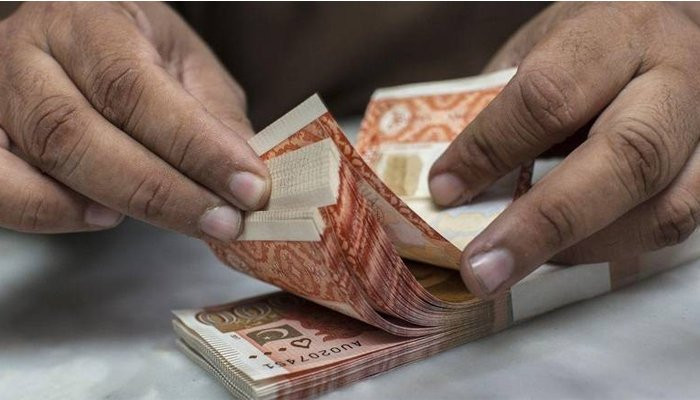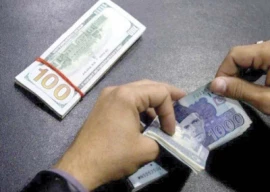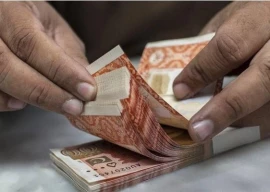
Pakistani currency maintained its downturn on the fourth consecutive day, as it dropped by a notable 0.91% (or Rs1.75) to a new all-time low at Rs191.77 against the US dollar in the interbank market on Thursday.
The rupee closed at Rs190.02 on the previous day (Wednesday), according to the central bank’s data.
Cumulatively, in the past four working days, the rupee has depreciated 2.75% (or Rs5.14) to Rs191.77.
Experts underlined that global and domestic political and economic uncertainties triggered the latest round of depreciation in the local currency.
Forex Association of Pakistan (FAP) Chairman Malik Bostan said in a statement that the political uncertainty took a toll on the rupee, as “the politics of dividing the country into new and old Pakistan badly impacted the macro-economy”.
He said that the trade deficit has reached a record high at $39.2 billion in the first 10 months of the current fiscal year 2021-22, while the country’s foreign exchange reserves have dropped to a 29-month low at $10.3 billion in the week ended on May 6, 2022.
Read Dollar touches all-time high of Rs190 as PSX sheds 500 more points
The widening of trade deficit and fall in reserves to a critical low level mounted pressure on the rupee against the greenback.
He urged the government to convince the International Monetary Fund (IMF) to resume the multi-billion dollar loan programme as soon as possible, as the lending institution would then release the next tranche of loan (worth $1 billion) to Islamabad.
This will be followed by friendly countries like Saudi Arabia, the United Arab Emirates (UAE) and China to announce fresh bailout packages for Pakistan.
The inflows would help stabilise the foreign exchange reserves, “which is a must to support rupee against the dollar,” he said.
Published in The Express Tribune, May 13th, 2022.
Like Business on Facebook, follow @TribuneBiz on Twitter to stay informed and join in the conversation.






















COMMENTS (1)
Comments are moderated and generally will be posted if they are on-topic and not abusive.
For more information, please see our Comments FAQ